How to determine the gender of a parrot?
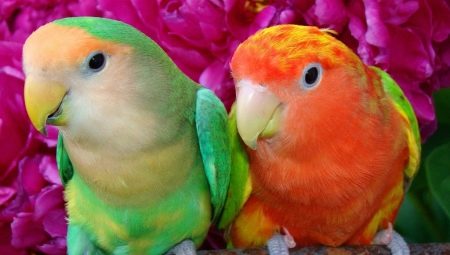
Parrots are very popular pets. These are funny cheerful birds that will never let their owner get bored. Caring for a parrot is not so easy, however, determining the sex of an animal is even more difficult. Most often, in pet stores, sellers have no idea what gender the parrot is, but they do not consider it important, especially if the buyer takes only one bird.

Why determine gender?
Knowing the sex of the bird is necessary if the owner plans to breed parrots. Do not rely on the opinion of the seller from the pet store: with a clear conscience he can sell two girls or two boys, and the owner will wait in vain for offspring. And even if a potential breeder is lucky, and the cubs still appear, then in the future he will have to deal with the sale of parrots. As a rule, the sex of the future animal is important to many buyers, and this is where the ability to distinguish between boys and girls will come in handy again.... There are also reverse situations. Perhaps the owner does not need chicks at all, and he prefers to be the owner of two male friends.
What will be his surprise when an egg is found in the cage!
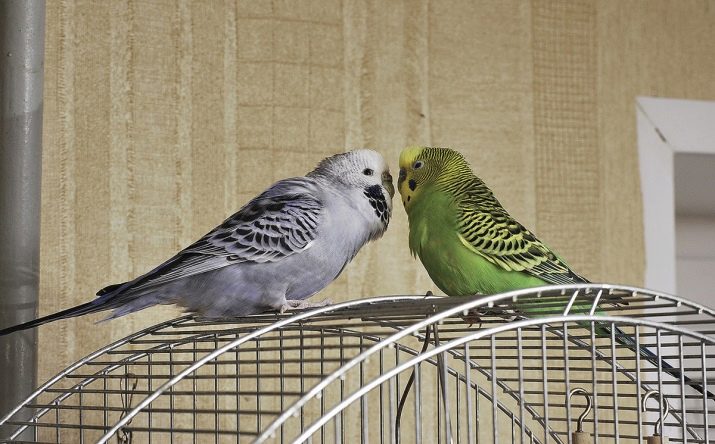
If you do not know the sex of the parrots, then it is impossible to give the birds a suitable name. Of course, it is allowed to call a feathered friend a neutral nickname - Sashka, Bird, Ass - and yet it would be more correct to choose a nickname by gender. Often you need to know the gender of a parrot in order to understand how to behave with a bird. For example, females are considered less tame. And if the owner purposefully buys the girl, then she will not annoy her once again, trying to accustom her to her hands.

How to distinguish a female from a male by appearance?
Different types of parrots can distinguish males and females by color.For example, the sex of a budgerigar can be determined from 1.5 months on the bridge of the nose. On the supra-beak wax at the indicated age, the guys have a blue or purple tint, and after another 4.5 months the bridge of the nose will become bluish. In females, this part of the body is pale pink, but gradually acquires a brown tint. During stressful situations or during the molting period, the beeswax temporarily turns blue in females. Look at the coloring of the legs. For boys, they are bluish, and for girls, they are pink. By itself, the wavy guy has a more juicy and colorful plumage, on his back you can see a sinuous decoration.
The head of the male is smooth, while the female has an angular forehead.
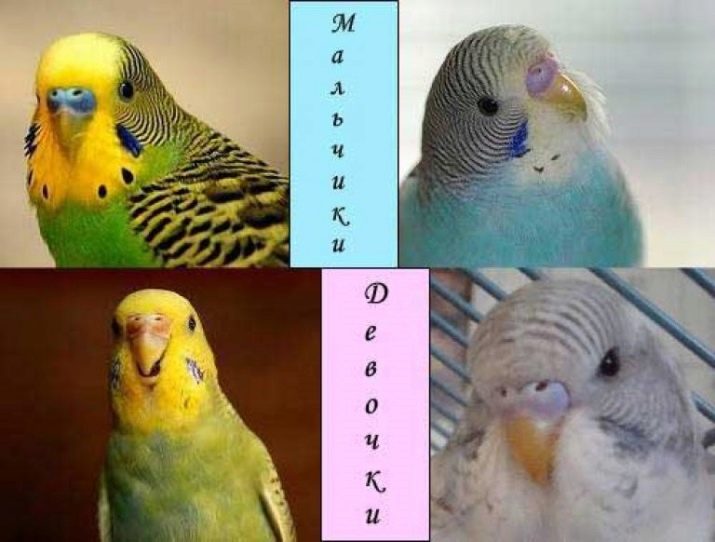
In a cockatiel parrot, it is more difficult to determine the sex. Experts know how to distinguish between males and females already when the birds reach the age of four months, but more often it becomes possible to determine the sex more accurately only by the age of one year. In boys, cockatiels have a thin and neat crest, while their lovers have a crest, wide from the very base. In the male crest, 2-3 long feathers with a greenish tint can be counted, and in the female, the crest consists of six shorter feathers of the same color. After molting, the plumage of the male acquires a bright saturated color, the head is painted in a yellowish tint. The boys have bright red cheeks, and the color of the body is pure steel. Girls have dull plumage, and brown and yellow spots can be seen on the gray body, the same blotches are observed on the inner side of the wing.
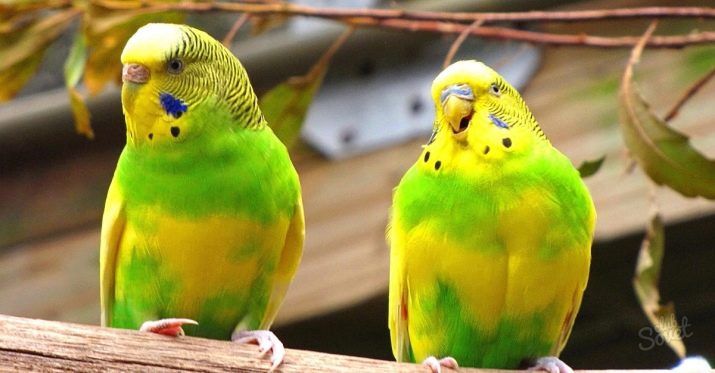
The sex of the cockatiel by the above criteria can be determined if a bird of natural color is purchased. When crossing, pets of the most different colors are obtained, which complicates sex determination. In this case, you can pay attention to the structure of the animal's body. Girls have a small hump on their backs, but boys do not. But the guys have an even back and sharp wings with a pronounced color. If the bird is relaxed, and at this moment has taken a rounded shape, then it is probably a female. The male Corella during rest is distinguished by a slender and fit figure. In females, a vertical parting can be found on the abdomen, which males do not have. Look also at the shape of the tail: for boys, a narrow and long neat tail is characteristic, for girls - a wide and somewhat sloppy tail.
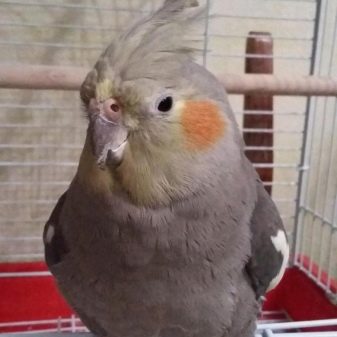
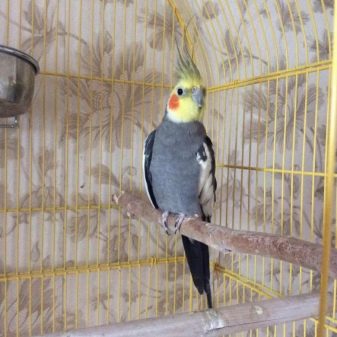
Sex is almost impossible in lovebird parrots, but a closer look reveals a more elongated head and a lower frontal region in the male. The girl's head is more rounded. Pay attention to the pelvic part too.... Feel the parrot's belly and feel the rounded bones that look like matches.
In girls, the distance of the pelvic bones is 1 cm, and in boys - no more than 0.5 cm.

Determining gender by behavior
The color of the plumage and other external signs help to find out the sex, if you study a particular variety well. By behavior, a bird of any breed can be distinguished from a female. So, girls are usually calmer, they like to doze, relax, it is difficult to interest them with a mirror, a bell and other toys. They do not like to sit on their hands, get annoyed when the owner tries to stroke or scratch, they can bite the owner's finger until it bleeds. Ladies do not react to human conversation, they are poorly trained and are considered more wild and aggressive. In nature, females gouge hollows in which they raise chicks, so their genes have a constant desire to gnaw something, for example, a cage or perch.
Pay attention to how the feathered mistress cleans the cage of debris: she flaps her wings, causing all the debris to fly to the sides with a stream of air.
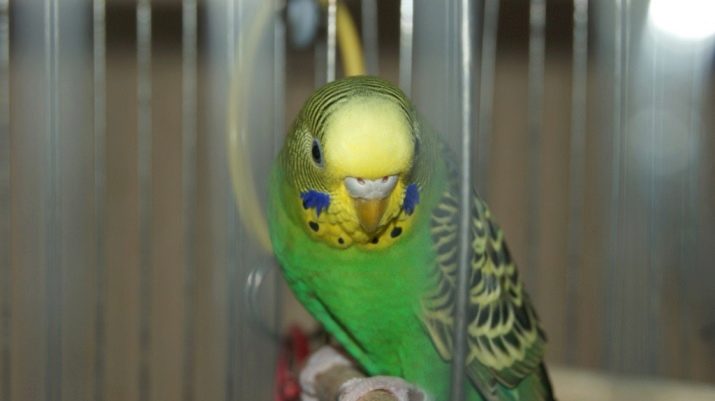
Boys are usually more good-natured by nature. They easily get used to their hands, love to play, twitter, they like to communicate with their reflection in the mirror.Males respond well to the human voice and prefer to keep up a conversation at all times. If the species is speaking, then the guy will start repeating words faster than his partner. These are contact tame animals that are happy to sit in the arms of the owner.
Sometimes the male can bite the owner by the finger, but unlike the female, not with all his might, but as a warning.

You can distinguish between a boy and a girl by observing the behavior of the couple. Males often place their paws on their cagemates. If a boy and a girl are kept together, then the guy will feed his girlfriend, regurgitating food into her beak. During intercourse, boys are always on top and girls on the bottom. Often in the behavior of the male, one can observe the imitation of sexual intercourse with other objects. For some ladies, this behavior is also characteristic, but not so often. In most species, during the mating season, it is the male who tries to attract the attention of his beloved. He dances, demonstrates the beauty of plumage and his vocal abilities.
You can determine the gender of a feathered pet by its sitting style. For example, girls sit on a perch with their legs wide apart, as if putting their abdomen on the perch. Boys tend to close their paws tightly while sitting. This sign can be observed when the parrot reaches the age of one.
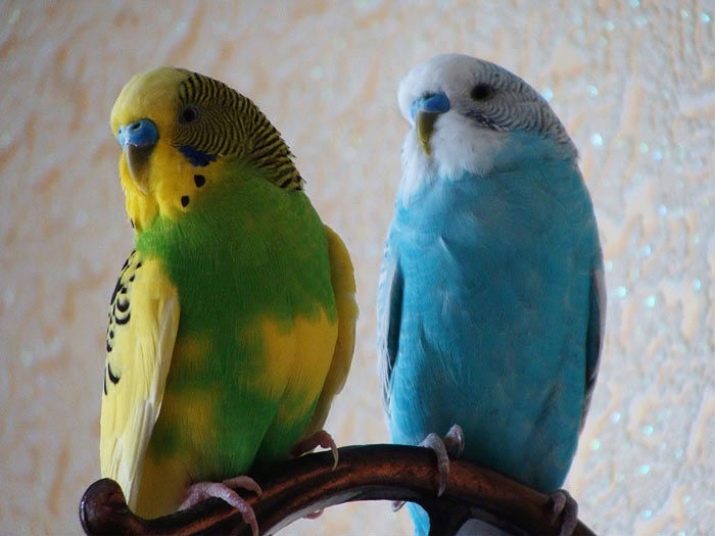
Other methods
Both the color of the plumage and the behavior of birds can only indirectly indicate sex. In the process of selection, parrots often lose some external features and acquire new ones. More and more new coloring pages are born, and gender determination becomes much more difficult. The behavior of birds is also not a true indicator, much depends on the temperament and conditions of detention. With poor grooming and minimal communication, the male can become melancholy or aggressive, although this behavior is usually typical of the female. More accurate methods for determining gender are presented below.
- If the owner found an egg in a cage containing one individual, then the question is removed. This is a 100% guarantee that the owner has a female. Naturally, the testicle is not fertilized, and there is no point in waiting for offspring. Determining the sex is difficult if the cage contains a pair of birds, and it becomes unclear which of them laid the egg. To identify the lady, you can put the parrots in separate cages and wait for the next addition, or put a video camera on next to the cage and view the recordings when a new testicle appears.
- Another reliable way to find out the sex of your pet in advance is to buy it from the breeder, and not at the poultry market or pet store. Usually, those who breed birds are able to determine the sex when the parrot reaches four months of age. Nowadays, even in small towns there are people engaged in breeding parrots. Try to find one of these in your locality and buy a boy or a girl from him.
- Your veterinarian will help you find out the sex of the bird more accurately. Take the animal to a specialist. He will not only examine the pet's plumage in more detail and study other sexual characteristics, but also advise the owner on feeding, vitamin supplements, and maintenance.
- The most accurate method for determining the sex of a bird is with a DNA test. The blood of an animal, washout from the cloaca, or several feathers are suitable as the material to be examined. Far from everywhere there is a special laboratory where such tests are carried out, but many veterinary clinics offer this service, sending material for examination to a laboratory in another city.

You can learn more about how to determine the sex of a budgerigar in the following video.








